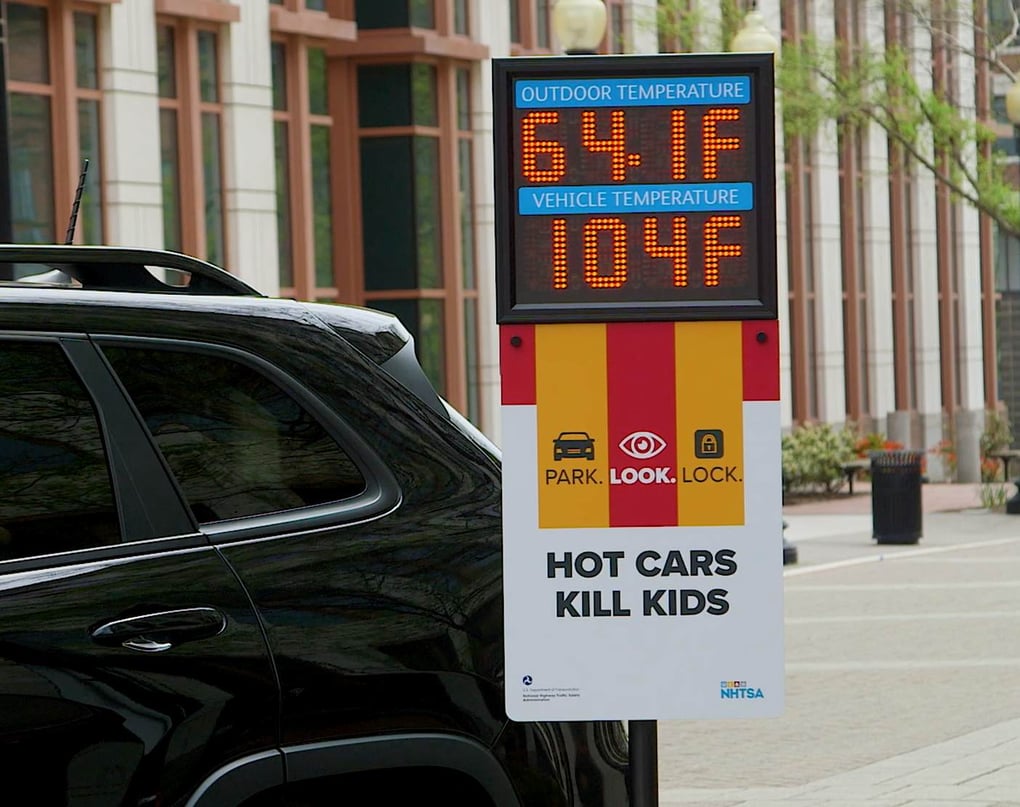I make an impassioned plea to all listeners of both the DFW CarPro Show and National show every year as temperatures rise about leaving kids and pets in hot cars.
PLEASE take a minute and read the statistics below and share it with anyone who has a small child or travels with pets in the car. I update this story every year in hopes that it may get into the hands of parents who leave small children or pets in the car and prevent another child or pet from suffering a horrible, slow, agonizing deaths.
-Jerry Reynolds, The Car Pro
It will likely hit 100-degrees in my hometown soon, so it is time for our annual reminder of the dangers of leaving children and pets in hot cars.
According to the National Highway Traffic Safety Administration, April 2023 marked 25 years that pediatric vehicular heatstroke deaths have been tracked. Last year, 33 children died of heatstroke after being left in a hot car, up from 22 the year prior.
“Every year, 38 children lose their lives in hot cars, and these are tragedies that can be prevented,” NHTSA Deputy Administrator Sophie Shulman said. “By never leaving a child alone in a car to checking the backseat before getting out of the vehicle, we are asking all Americans to understand the risks posed by hot cars and do their part to keep children safe.”
The NHTSA says the biggest risk factor in these cases is a change in routine.
The three main scenarios in which heatstroke occurs are:
-
- Children are forgotten in vehicles by parents or caregivers
- Children gain access to unlocked vehicles and become trapped inside
- Children are knowingly left in vehicles by parents or caregivers
The NHTSA says that approximately 58% of heatstroke deaths occur when the child is at home, followed by 23% of deaths occurring at a parent or caregiver’s work.
Car Heat Stroke Statistics
Absorb the numbers below. Each case ended with the death of a child and the planning of a funeral:
- Child vehicular heatstroke deaths for 2022: 33
- Child vehicular heatstroke deaths for 2021: 23
- Child vehicular heatstroke deaths for 2020: 25
- Child vehicular heatstroke deaths for 2019: 53
- Child vehicular heatstroke deaths for 2018: 53
- Child vehicular heatstroke deaths for 2017: 43
- Child vehicular heatstroke deaths for 2016: 39
- Child vehicular heatstroke deaths for 2015: 25
- Child vehicular heatstroke deaths for 2014: 32
- Child vehicular heatstroke deaths for 2013: 44
- Child vehicular heatstroke deaths for 2012: 35
- Child vehicular heatstroke deaths for 2011: 33
The sad part is, each of those deaths was avoidable, and the vast majority were accidental. From 1998-2021, 895 children died due to vehicular heatstroke. Of those deaths:
- 54 percent were forgotten by a caregiver;
- 26 percent were playing in an unattended vehicle;
- 19 percent were intentionally left in vehicle by an adult; and
- 1 percent died under unknown circumstances.
Temperature and Heat Stroke
The NHTSA says that a child's body temperature rises three to five times faster than an adults.
- Heatstroke begins when the core body temperature reaches about 104 degrees.
- A child can die when their body temperature reaches 107 degrees
Many people often underestimate how quickly temperatures rise in a hot car.
Average elapsed time and inside vehicle temperature rise compared to ambient outdoor temperature:
- 10 minutes = 19 degree increase
- 20 minutes = 29 degree increase
- 30 minutes = 34 degree increase
- 1 hour = 43 degree increase
- Over 1 hour = 45 to 55 degree increase
It is easy to see that while most think an 80 degree outside temperature is pleasant, in a short 30 minutes, the inside temperature of a car is 114 degrees.
Note this important fact: a body core temperature of 107 degrees is usually fatal.
This video demonstrates the temp inside of a car versus the outside ambient temperature:
Prevention
There are some common sense things people can do to avoid causing a heatstroke death to children and pets:
- Never leave a child or pet in an unattended car, even with the windows down or part way down.
- Remember to always Look Before You Lock. Be sure all occupants leave the vehicle when unloading. Don’t overlook sleeping babies or pets.
- Keep a stuffed animal in the car seat and when the child is put in the seat, place the animal in the front with the driver as a reminder.
- Place your cell phone, purse, briefcase, or even a shoe in the back seat as a reminder that you have your child in the car.
- Always lock your car. If a child is missing, check the car first, including the trunk. Teach your children that vehicles are never to be used as a play area
- Make a look before you leave a routine whenever you get out of the car.
- Have a plan that your childcare provider will call you if your child does not show up for school
- If you see a child in distress in a vehicle – ACT. Call 911 immediately and get help.
New Technology
I review a lot of new cars, and many of the cars have a Rear Seat Reminder system these days, thankfully. The Rear Seat Reminder works by monitoring the vehicle’s rear doors. The feature is activated when either rear door is opened and closed up to 10 minutes before the vehicle is started or while the vehicle is running. Once the system is activated, the vehicle is designed to sound five chimes and display a message in the driver information center that reads “Rear Seat Reminder / Look in Rear Seat” the next time the vehicle is turned off. Believe me, you will not miss this alarm.
Some even use heat detectors and motion detectors and besides sounding the horn, will text you.


